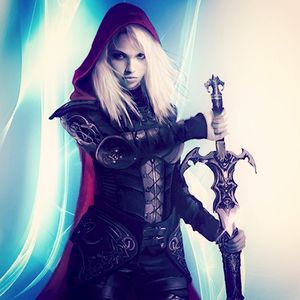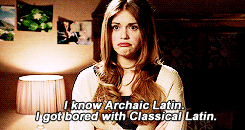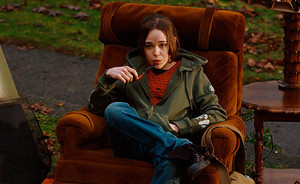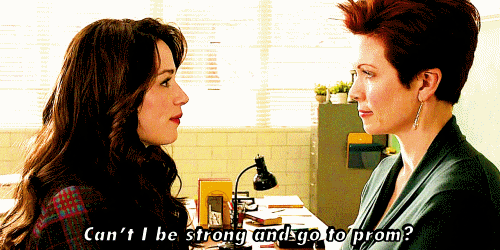I’m not sure what this is going to be. Is it a rant? Is it a commentary? Is it an illumination on media’s inability to display women as people? Who knows?
I love to read. It’s something I’ve always loved, something that has always been important to me, something that has seen me through every hard time and struggle. Furthermore, I love to read young adult fiction. This, as you can imagine, leads to reading a lot of the typical “strong female character”. And I’m all for that, I love strong female characters, badasses that own the page, that are so strong it makes everyone else in their story seem weak.
However.
Sometimes I worry that we end up in a cycle of archetypes. We have the strong female character. We have the damsel in distress. We have the siren. and though these can all create really interesting, 3D characters, I worry. I worry because women are more frequently written as archetypes than as people. The strong female character isn’t allowed to have a weakness, the damsel isn’t allowed to be strong and the siren can’t be doubtful of herself. These characters are written in a way that allows the men of the story to save the day, to grow and to appear human on the page. Even as main characters, these women remain static and unchanging, 2D and nothing more than the tool of the author.
This doesn’t just happen in books, though. TV. Movies. even the display of celebrities leads to these women being put into a category. Emma Watson and Taylor Swift are’good girls’. Gigi Hadid is ‘the relatable friend’. Everyone fits an archetype – the mother, the slut, the virgin. The nerd or the model, smart or pretty. There isn’t room to allow these women to be the people they are, as it would actually begin the idea that women are people, with strengths and weaknesses, good and bad. The press would be expected to respect them. It wouldn’t be socially acceptable to write off blatant talk about sexual assault as “locker room talk”
Personally, I find the scariest part the fact that people don’t do it on purpose. We’ve grown up with these beliefs that you can be one but not the other, and the encouragement of girl-on-girl hate, the idea that girls are competition instead of teammates in this word, further spreads the archetypes, the way we’ve painted women in the media to a younger generation, renewing the vicious cycle.
Don’t get me wrong, I don’t think I’m the sole person to notice, nor do I think I’m the only one that is trying to do anything about this. Lilly Singh, a Canadian YouTuber, advocates for girl love, writers and producers everywhere are working to have rounded female characters. They write women who are strong and weak, smart and pretty, brave and scared, women who have seemingly juxtaposing attributes, women who are real.
In an effort to do something, I’ve compiled a list of female characters that, I feel, are the beginning of a future of depicting women as people.
- Aelin Ashryver Galathynius
 (Throne of Glass series) A perfect example of a character that makes mistakes, saves the world, and, one of the most amazing parts, dates multiple people within a single series, without it being for drama or effect.
(Throne of Glass series) A perfect example of a character that makes mistakes, saves the world, and, one of the most amazing parts, dates multiple people within a single series, without it being for drama or effect. - Lydia Martin
 (Teen Wolf) Primarily included for the extensive character development she undergoes, Lydia emulates the idea that beauty and intelligence are not mutually exclusive. She is blatantly sexual without being portrayed as ‘the slut’, and she proves that a girl can be weak in some situations but strong in others. Most importantly, she shows that you don’t have to choose between being liked and being yourself.
(Teen Wolf) Primarily included for the extensive character development she undergoes, Lydia emulates the idea that beauty and intelligence are not mutually exclusive. She is blatantly sexual without being portrayed as ‘the slut’, and she proves that a girl can be weak in some situations but strong in others. Most importantly, she shows that you don’t have to choose between being liked and being yourself. - Juno
 (Juno)-A prime example of the de-sterotypization of ‘the virgin’ vs ‘the slut’, Juno is a teen girl who is neither sexualized not desexualized, a girl who makes mistakes and handles the consequences, who is not a damsel nor a heroine.
(Juno)-A prime example of the de-sterotypization of ‘the virgin’ vs ‘the slut’, Juno is a teen girl who is neither sexualized not desexualized, a girl who makes mistakes and handles the consequences, who is not a damsel nor a heroine. - Allison Argent
 (Teen Wolf)–a great example that being traditionally feminine is not a weakness, and that you can be a badass without being a bitch.
(Teen Wolf)–a great example that being traditionally feminine is not a weakness, and that you can be a badass without being a bitch. - Katniss Everdeen
 (The Hunger Games)-Another character that is written as a human. Known for being one of the few characters that struggle with major mental health issues, Katniss shows that women can be both heroes and damsels, and don’t need a guy to save them.
(The Hunger Games)-Another character that is written as a human. Known for being one of the few characters that struggle with major mental health issues, Katniss shows that women can be both heroes and damsels, and don’t need a guy to save them.
Links for further reading if you like this stuff:
Screw writing strong female characters
Lilly Singh’s Girl Love Challenge
Pub Crawl’s “On Writing ‘Strong’ Women”





